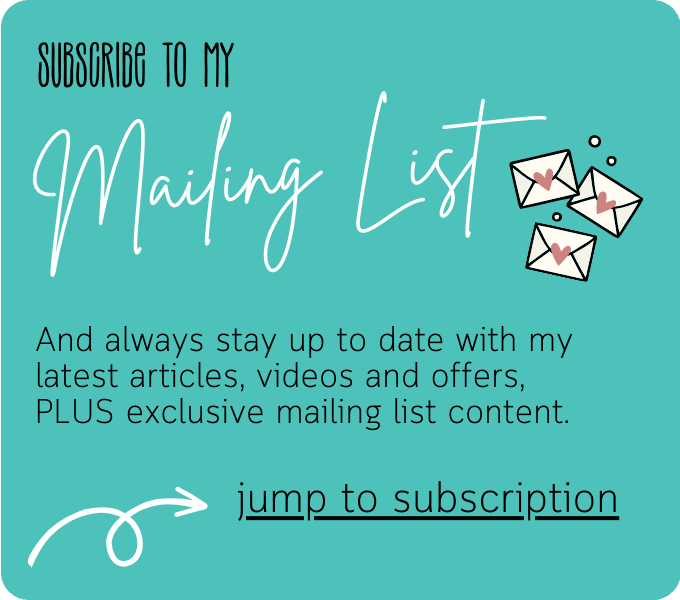Neurodiversity in UX & Leadership: A Crucial Puzzle Piece to Innovation
4. September 2023 2023-09-28 10:30Neurodiversity in UX & Leadership: A Crucial Puzzle Piece to Innovation
To understand neurodiversity in UX context let’s look at history: Neurodiversity, a term coined in the late 1990s by Australian sociologist Judy Singer, challenges the conventional understanding of neurological differences. It celebrates the idea that the human brain is beautifully diverse, just like the natural world’s ecosystems. In a world that often values conformity, the neurodiversity movement advocates for embracing and appreciating humanity’s broad spectrum of cognitive variations.
At the heart of this movement is the concept of „neurodivergence.“ Neurodivergence refers to the naturally occurring variations in how people think, learn, and process information. It encompasses a range of conditions, including autism, ADHD, dyslexia, Tourette Syndrome, and more, each with its unique strengths and challenges.
As a UX and leadership coach, I am especially eager to work with individuals and organisations seeking to harness the power of neurodiversity in the workplace because I firmly believe that diverse minds are the driving force behind innovation, particularly in fields like UX design and leadership.
This article will discuss neurodiversity and neurodivergence, exploring their profound impact on UX design and leadership. It will uncover how neurodivergent individuals bring unique strengths and perspectives to the table, paving the way for innovative solutions and inclusive leadership styles.
Join me as I navigate the fascinating intersection of neurodiversity, creativity, and leadership and discover its untapped potential for transforming our workplaces and industries.

Understanding Neurodivergence
In a world where conformity often takes centre stage, the concept of neurodivergence shines as a beacon of inclusivity and acceptance. It challenges the traditional notion that neurological differences should be pathologised or stigmatised and instead celebrates the rich tapestry of cognitive variations that exist among us.
Defining Neurodivergence
Neurodivergence signifies the diverse range of cognitive profiles and neurological differences within the human population. It encompasses a wide spectrum of conditions, including autism, ADHD, dyslexia, Tourette Syndrome, sensory processing disorder, and many others. Each of these conditions represents a unique way in which the brain processes information, thinks, and interacts with the world.
Rejecting the Pathology Model
A fundamental principle of neurodivergence is the rejection of the pathology model. Rather than viewing neurodivergent conditions as disorders or deficits to be fixed, the neurodivergence paradigm sees them as natural variations of the human experience. It asserts that these differences are not inherently negative but can be sources of strength, creativity, and innovation.
The Spectrum of Neurodivergence
Neurodivergence is characterised by its intrinsic diversity, transcending a rigid linear spectrum. Instead, it’s a multidimensional tapestry where every individual’s cognitive profile is a unique composition. Within each neurodivergent condition lies a rich range of experiences.
Some individuals with autism may navigate the world with what appears to be subtlety, yet their internal experiences can be profoundly affected. On the other hand, there are those with autism whose external expressions are more readily noticeable, yet they, too, have their distinct journeys and strengths. Similarly, ADHD can manifest in myriad ways, from the outwardly visible to the quietly intricate, with a vast array of strengths hidden beneath the surface.
In neurodivergence, there are no fixed boundaries or uniform experiences. Instead, it celebrates the intricate, diverse, and beautifully complex minds that shape our world. Understanding this multidimensional nature is pivotal as we explore the impact of neurodivergence in UX design and leadership in the following sections.
Strengths and Perspectives
One of the core tenets of neurodivergence is recognising and celebrating the unique strengths and perspectives that neurodivergent individuals bring to the table. For example, individuals with ADHD may excel in hyperfocus and lateral thinking, making them valuable problem solvers. Those on the autism spectrum may have a heightened attention to detail and exceptional pattern recognition skills, which are assets in various fields, including technology and design.
Beyond the Binary
It’s important to note that neurodivergence extends beyond a binary distinction between neurotypical and neurodivergent. Instead, it recognises that diverse cognitive profiles exist within the entire human population, each with unique strengths, perspectives, and challenges. It’s a reminder that our minds, like the broader natural world, thrive in their diversity. We celebrate this diversity and acknowledge that not everyone may undoubtedly identify as neurotypical or neurodivergent, but we recognise and respect the richness of the human cognitive experience.
Understanding neurodivergence is not merely an exercise in terminology; it’s a paradigm shift that has far-reaching implications for how we view and interact with individuals with diverse cognitive profiles.

Neurodiversity in UX Design
The world of user experience design is inherently rooted in the pursuit of creating products, interfaces, and experiences that cater to a diverse range of users. It’s a discipline that thrives on empathy, creativity, and an acute understanding of user needs. In this context, neurodiversity emerges as a transformative force, enriching the field with fresh perspectives and innovative approaches.
The Neurodivergent Advantage in UX
Neurodivergent individuals, with their unique cognitive profiles, offer many advantages in UX design. They bring fresh insights into the user experience, transcending conventional design boundaries. Here are some key areas where neurodivergent designers excel:
- Creative Problem Solvers: Neurodivergent designers often approach problems from unconventional angles. Their ability to think laterally and see connections that others might miss can lead to innovative solutions.
- Attention to Detail: Many neurodivergent individuals have an exceptional eye for detail. This quality ensures that every design aspect is meticulously considered, no matter how small.
- Empathy-Driven Design: Contrary to common belief, neurodivergent designers can excel at creating empathetic designs. Drawing from their unique perspectives, they develop solutions that cater to a broader range of user needs, making products more inclusive.
- Pattern Recognition: Recognising patterns and trends is a neurodivergent strength. It can lead to designs that resonate with users, offering familiarity and ease of use.
- Hyper-Focus: Some neurodivergent individuals exhibit hyper-focus, enabling them to immerse themselves deeply in projects. This intense focus can produce exceptional results, particularly when working on complex design challenges.
Inclusive UX Design
Embracing neurodiversity in UX design extends beyond recognising the talents of neurodivergent designers. It involves a commitment to designing inclusively for all users, regardless of their cognitive profiles. Here are some strategies to foster inclusive UX:
- User-Centered Design: Prioritise user research and testing with diverse groups to ensure that designs are accessible and usable by a broad range of individuals.
- Accessibility Standards: Adhere to accessibility standards and guidelines, such as WCAG (Web Content Accessibility Guidelines), to ensure that digital products are accessible to individuals with various disabilities, including neurodivergent users.
- User Testing with Neurodivergent Individuals: Involve neurodivergent individuals in the user testing process to gain valuable insights into how they interact with your products. Incorporating this strategy can uncover usability issues and lead to more inclusive designs.
- Clear and Consistent Design: Maintain clear and consistent design elements, layouts, and navigation to reduce cognitive load for all users.
- Flexibility in Interaction: Allow users to customise their experience when possible, offering options for adjusting settings, layouts, and sensory input to accommodate diverse preferences and needs.
Neurodivergence is not a challenge to overcome in UX design; it’s a wellspring of innovation and inclusivity. By embracing the unique strengths and perspectives of neurodivergent designers and adopting inclusive design practices, the UX community can create products and experiences that resonate with a broader and more diverse user base.

Neurodiversity in Leadership
Leadership is not merely about overseeing teams and making decisions; it’s about setting a vision, inspiring others, and creating an environment where diverse talents and perspectives can flourish. Neurodivergent individuals bring a unique lens to leadership that challenges traditional paradigms and propels organisations toward innovation and inclusivity.
The Neurodivergent Leadership Advantage
Leaders with neurodivergent traits often possess a distinctive set of qualities that can be invaluable in the workplace:
- Innovative Thinking: Neurodivergent leaders tend to think outside the box. Their unconventional approaches to problem-solving can lead to groundbreaking ideas and strategies.
- Inclusivity: Neurodivergent leaders understand the value of diversity and inclusion. They are often passionate advocates for creating workplaces where all voices are heard and respected.
- Detail-Oriented: Attention to detail is a hallmark of many neurodivergent individuals. In leadership, this quality ensures thorough planning and execution, reducing the likelihood of oversights.
- Empathetic Leadership: Neurodivergent leaders often excel in compassionate leadership. They have a unique ability to understand the needs and perspectives of diverse team members, fostering a collaborative and supportive work environment.
- Resilience: Overcoming personal challenges, which many neurodivergent individuals have faced, can foster resilience. Neurodivergent leaders often exhibit determination and persistence in pursuing their goals.
Inclusive Leadership Practices
To harness the neurodivergent leadership advantage, organisations can adopt inclusive leadership practices:
- Diverse Leadership Teams: Aim for diverse leadership teams that reflect a range of cognitive profiles, including neurodivergent leaders, to bring various perspectives to the decision-making process.
- Neurodiversity Training: Provide training and awareness programs on neurodiversity for leaders and team members to foster understanding and create an inclusive workplace.
- Flexible Work Arrangements: Implement flexible work arrangements that accommodate the unique needs of neurodivergent team members, such as variations in work hours or sensory-friendly workspaces.
- Open Communication: Encourage open and honest communication within teams, making it safe for team members to share their perspectives and needs.
- Accommodations: Be proactive in offering accommodations for neurodivergent team members, whether related to workspace modifications, communication preferences, or sensory considerations.
Neurodivergent leadership is not a deviation from the norm but a valuable addition to the leadership landscape. Embracing neurodiversity in leadership fosters an environment where innovation thrives, diverse talents are celebrated, and inclusivity becomes a cornerstone of organisational culture.

Overcoming Challenges
While neurodivergent individuals bring a wealth of strengths and unique perspectives to the workplace, they may also encounter specific challenges. Many of those do not stem from their conditions but rather from an environment predominantly designed for neurotypicals, not always considering their unique needs and preferences.
Organisations and leaders must be aware of these challenges and implement strategies to support neurodivergent team members effectively to take meaningful steps toward building genuinely inclusive workplaces.
1. Sensory Sensitivities:
- Challenge: Many neurodivergent individuals have sensory sensitivities that can make traditional office environments overwhelming. Bright lights, loud noises, or certain textures can be distressing.
- Strategy: Create sensory-friendly workspaces or offer flexible work arrangements that allow individuals to control their sensory environment.
2. Communication Differences:
- Challenge: Some neurodivergent individuals may have differences in communication, such as difficulty with eye contact or interpreting nonverbal cues.
- Strategy: Foster clear and direct communication. Encourage written communication when needed and educate team members on diverse communication styles.
3. Executive Function Challenges:
- Challenge: Executive function challenges, common in conditions like ADHD, can affect time management, organisation, and task completion.
- Strategy: Provide tools and training in time management and organisation. Use task management software to help individuals prioritise and stay on track.
4. Social Interaction:
- Challenge: Neurodivergent individuals may struggle with social interactions and navigating office politics.
- Strategy: Offer social skills training and mentorship opportunities. Create a culture of inclusivity and respect.
5. Stigma and Misunderstanding:
- Challenge: Stigma and misunderstanding around neurodivergence can lead to biases and discrimination.
- Strategy: Implement anti-bias training and awareness programs to educate team members and reduce stigma. Promote a culture of acceptance and diversity.
6. Anxiety and Stress:
- Challenge: High levels of stress and anxiety are common among neurodivergent individuals, especially in demanding work environments.
- Strategy: Offer mental health support services and resources. Encourage self-care practices and promote work-life balance.
7. Accommodations:
- Challenge: Some neurodivergent individuals may require specific accommodations to perform at their best.
- Strategy: Be proactive in offering accommodations, whether related to workspace modifications, flexible schedules, or assistive technologies.
By addressing these challenges with empathy and tailored support, organisations can create a workplace where neurodivergent individuals can thrive. Recognising that neurodiversity is a source of strength and innovation rather than a limitation is a fundamental step toward building truly inclusive organisations.

Fostering Neurodiversity in the Workplace
Fostering neurodiversity in the workplace requires a multifaceted approach beyond mere awareness and accommodation. It involves actively cultivating an environment where neurodivergent individuals are included and celebrated for their unique contributions. Here are actionable strategies for your organisation, your leaders and other responsible persons to embrace neurodiversity:
Inclusive Hiring Practices: Incorporate inclusive hiring practices that actively seek out neurodivergent talent. Forge partnerships with organisations specialising in neurodiversity recruitment.
Education and Training: Prioritise neurodiversity education and training for all employees. This way, you foster awareness and understanding of neurodivergent conditions and experiences, nurturing a more inclusive culture.
Sensory-Friendly Workspaces: Design workspaces with sensory considerations in mind. Doing this can encompass adjustable lighting, designated quiet areas, and flexible seating options to accommodate varying sensory needs.
Flexible Work Arrangements: Offer flexible work arrangements, including remote work options, to accommodate the diverse needs and preferences of neurodivergent team members. Flexibility can enhance well-being and productivity.
Neurodiversity Employee Resource Groups: Establish employee resource groups (ERGs) focused on neurodiversity. These groups provide a platform for mutual support, sharing experiences, and advocacy for greater inclusivity.
Mentorship and Support: Implement mentorship programs that pair neurodivergent individuals with mentors who can guide and support their career development. Mentorship enhances professional growth.
Accommodations and Accessibility: Proactively offer accommodations such as assistive technologies and personalised workspace modifications to ensure equal access and opportunity for neurodivergent team members.
Inclusive Communication: Promote inclusive communication practices within the organisation. Clear and direct language ensures that everyone’s voice is heard and understood, fostering a more inclusive work environment.
Celebrating Differences: Celebrate neurodiversity as a source of strength within the organisation. Recognise and showcase the unique contributions of neurodivergent team members through internal communications and recognition programs.
Building Diverse Teams: Building diverse teams is fundamental in fostering neurodiversity. Seek out individuals from diverse backgrounds and experiences, including those with neurodivergent traits. Diverse teams naturally bring various perspectives, which can lead to more innovative and inclusive solutions.
Career Advancement: Create pathways for career advancement and leadership roles for neurodivergent individuals. Ensure that opportunities for growth and development are equitable and accessible to all.
Regular Feedback and Adjustment: Seek feedback from neurodivergent team members about their workplace experiences. Use this feedback to make continuous improvements that enhance inclusivity and well-being.
Fostering neurodiversity is an ongoing commitment that pays dividends in terms of innovation and creativity. By embracing these strategies, organisations not only support neurodivergent team members but also tap into the rich wellspring of diverse perspectives and talents that neurodiversity offers.

Conclusion: Embracing Neurodiversity for a Brighter Future
In this article, we’ve discovered the incredible strengths and perspectives that neurodivergent individuals bring to the workplace. From innovative thinking to empathetic leadership, neurodiversity enriches organisations and propels them toward greater success. Yet, it’s crucial to recognise that many of the challenges neurodivergent individuals face stem from a world designed primarily for neurotypicals.
Creating a truly inclusive workplace begins with education and awareness. It involves implementing inclusive hiring practices, accommodating diverse needs, and celebrating the unique contributions of neurodivergent team members. It’s about fostering an environment where every individual can thrive regardless of their cognitive profile.
By embracing these strategies and actively fostering neurodiversity, organisations support the well-being and growth of their team members and unlock a wellspring of innovation. Diversity, in all its forms, is the catalyst for progress, driving organisations toward excellence and pushing the boundaries of what’s possible.
I now invite you to take action. Embrace neurodiversity within your organisation and witness the transformative power it holds. Or are you a neurodivergent designer eager to work with me? Start by booking a free strategy call to learn how you can embark on this journey toward a brighter, more inclusive future.
Together, we can build a world where every mind, neurodivergent or neurotypical, contributes to the tapestry of progress, creativity, and success.
Further Reading
Fletcher-Watson, F. (2020). Neurodiverse or Neurodivergent? It’s more than just grammar. Blog of the University of Edinburgh. https://dart.ed.ac.uk/neurodiverse-or-neurodivergent/
Furr, P. (2023). Why It’s Important To Embrace Neurodiversity In The Workplace (And How To Do It Effectively). Forbes. https://www.forbes.com/sites/forbesbusinesscouncil/2023/03/07/why-its-important-to-embrace-neurodiversity-in-the-workplace-and-how-to-do-it-effectively/
Pisano, P. G. (2017). Neurodiversity as a Competitive Advantage. Harvard Business Review. https://hbr.org/2017/05/neurodiversity-as-a-competitive-advantage








